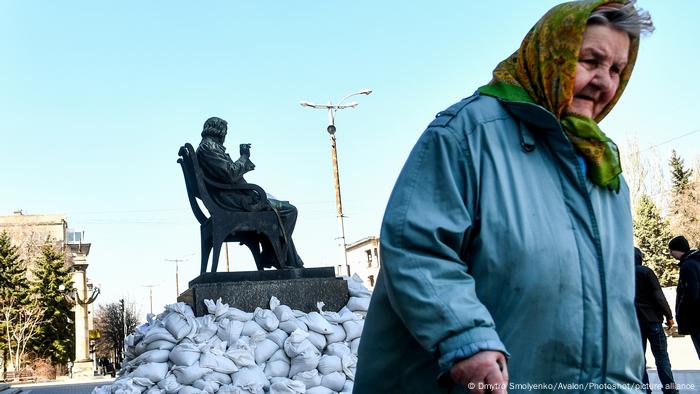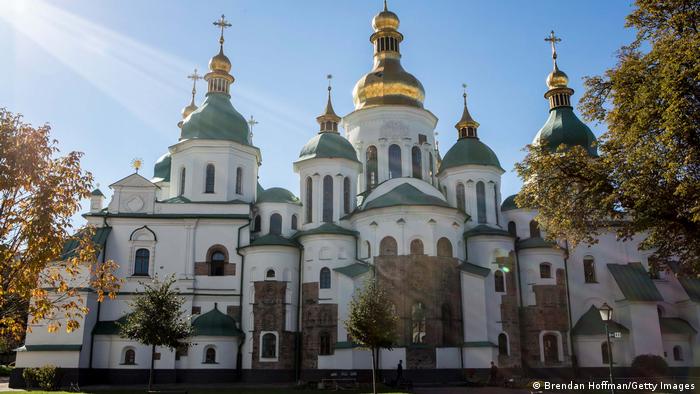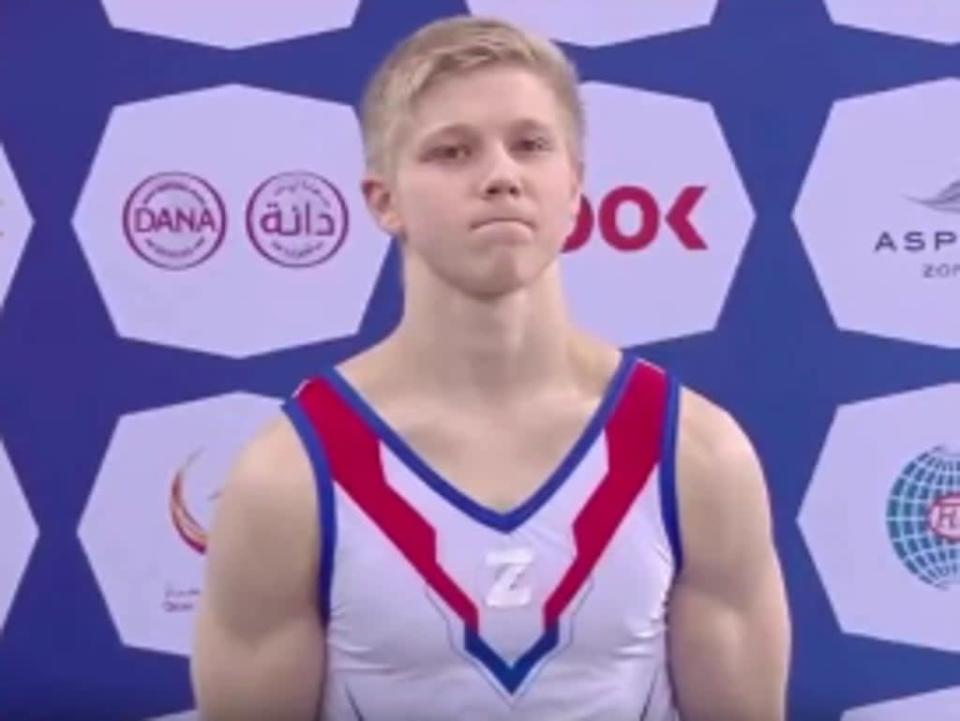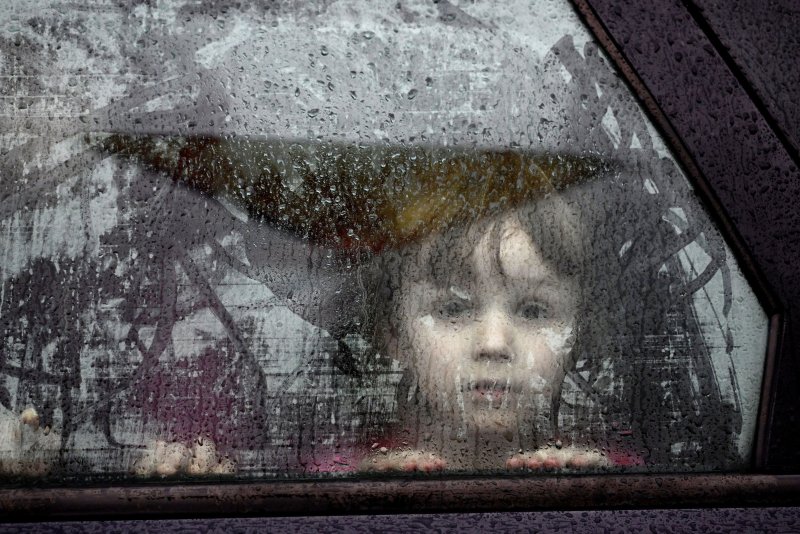The network protecting Ukraine's cultural heritage
As persistent attacks from Russia continue to destroy Ukrainian cities and age-old cultural sites, German experts are getting together to save the country's valuable heritage.

Sandbags protect a monument in Zaporizhzhia, in south-eastern Ukraine
In addition to the immense human suffering that has occurred since Russia invaded Ukraine on February 24, the ongoing war also means that Ukraine's cultural heritage is under threat.
This includes the country's churches, historical sites, museums, monuments and traditions. A week ago, UNESCO, the UN agency responsible for culture, estimated that more than 50 sites have already been damaged.
Beate Reifenscheid, president of the German branch of the International Council of Museums (ICOM), believes that number is much higher.
"From Mariupol, we don't even know what substantial damage there is," Reifenscheid told DW. "You have to assume that everything is lost there."
In March, Claudia Roth, the German Federal Government Commissioner for Culture and the Media, launched the Network for the Protection of Cultural Property in Ukraine together with the German Foreign Office.
The aim is to better protect cultural treasures, gather information and coordinate aid measures. Much of the work will be done from Germany, with ICOM Germany serving as the central contact point.
Too much going on at the same time
ICOM, founded in 1946 along with UNESCO, consists of 151 national committees. "Thanks to this international network, we didn't have to start from scratch," says Reifenscheid.
During protests against the Belarus dictatorship in 2020, she says cultural institutions had also asked for help. "[However] the fact that such a situation could occur in Ukraine was not on our radar," Reifenscheid added.
The difficult task now is to maintain a clear overview of the situation amid a confusing and constantly changing war scenario.
"Because everyone wants to help as quickly as possible, there is still too much going on all at once; we need to coordinate measures more closely."

ICOM Germany's President Beate Reifenscheid
Funds are currently limited to helping institutions on the ground in Ukraine. There are no immediate plans to evacuate objects across borders as "this would deprive Ukraine of cultural assets," explains Reifenscheid.
Moreover, in the case of temporary storage of artworks outside Ukraine, a significant and ominous question would be raised: What would happen if Russia won the war and occupied Ukraine? Would the art then have to be returned to the aggressor?
Protecting wood from flames
The Network for the Protection of Cultural Property includes numerous institutions such as the German National Library, the Prussian Cultural Heritage Foundation and the Federal Archives who decide about measures in digital meetings with other ICOM committees.
At the beginning of the war, it was agreed that packaging materials should be sent.
"They were brought to the Polish-Ukrainian border, and then sent through new routes to respective destinations," Reinfenscheid explains.
Currently, material is needed with which new boxes can be made to store and transport movable material, as well as fire extinguishers, fireproof blankets and non-flammable pastes to paint the wood.
It is more complicated to find technical equipment, for example air-conditioning for objects that need to be protected from heat or humidity.
"These devices cannot be provided by local museums because they are being used," Reinfenscheid says, adding that costs are high and financial support for the network is not finalized.
Participating institutions are supporting Ukraine with different kinds of expertise. The German Archaeological Institute is helping in the evaluation of satellite photos to document and verify damaged cultural sites. The Ukrainian Ministry for Culture and Information policy has created a website through which eyewitnesses and residents can report damages.
Already, 166 entries have been listed, though they have not yet all been verified. Photographs show bullet holes or bombings on museum or church facades.
"Windows, facades, the roof and the inner rooms of the old building of the cultural palace have been severely damaged by bombing," according to an entry from Mariupol.
Documenting war crimes
The documentation is also important because the destruction of cultural goods is considered a war crime. The General Director of UNESCO, Audrey Azoulay, wrote to the Russian Foreign Minister Sergei Lavrov in March demanding that cultural heritage in Ukraine be protected.
Russia is a signatory to the 1954 Hague Convention for the Protection of Cultural Goods in armed conflict. According to international law, the signatories commit to protecting cultural heritage during a war or armed conflict from damage, destruction, robbery, plundering and illegal occupation.
"The signing was not even worth the ink that was used," says Beate Reifenscheid, pointing at Russia, which denies Ukraine's cultural identity. "They want to destroy the soul and DNA of Ukraine," she says, and cultural heritage of a country is essentially a part of that.

THREATENED BY WAR: UKRAINE'S UNESCO WORLD HERITAGE SITES
Kyiv: Saint-Sophia Cathedral and related monastic buildings, Kyiv-Pechersk Lavra
This 11th-century Eastern Orthodox church was built to rival the Hagia Sophia, in present-day Istanbul. Its mosaics and frescoes are prized for their impressive condition. The church greatly influenced subsequent temples, and together with the nearby monastic complex known as Kyiv-Pechersk Lavra, or Kyiv Monastery of the Caves, it helped the area become a center of Orthodox faith and thought.
This article was originally written in German.



























